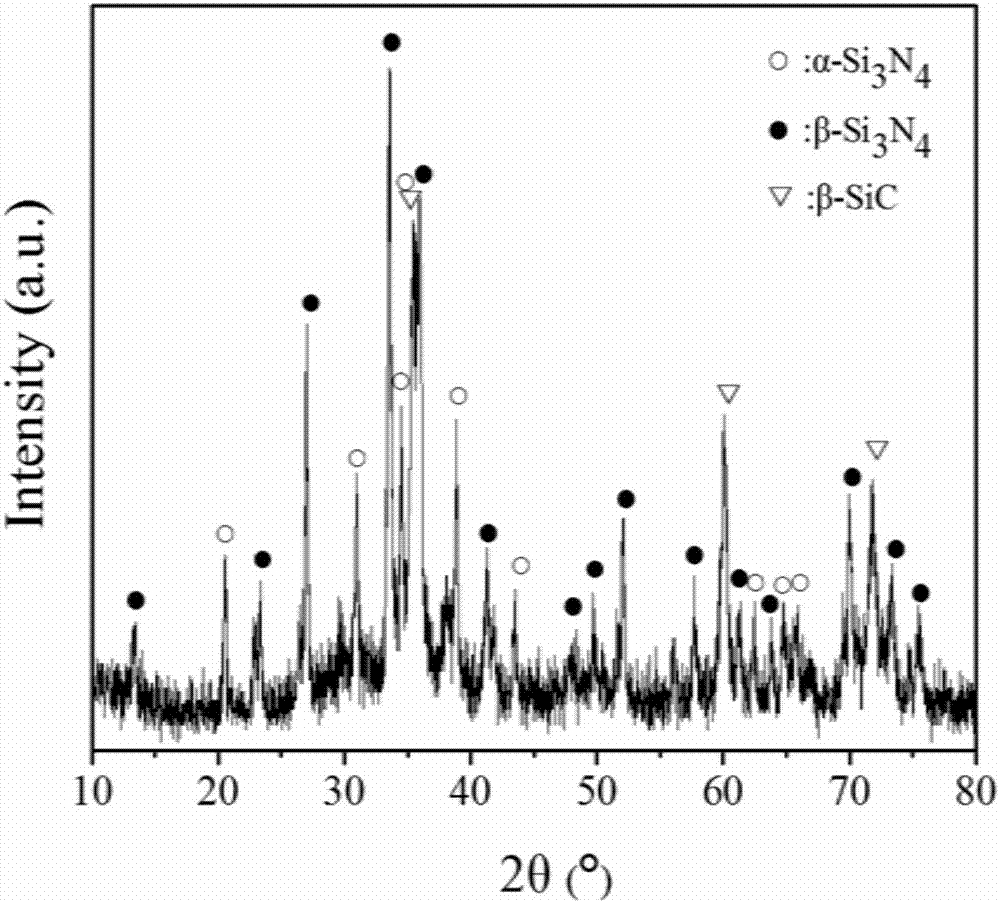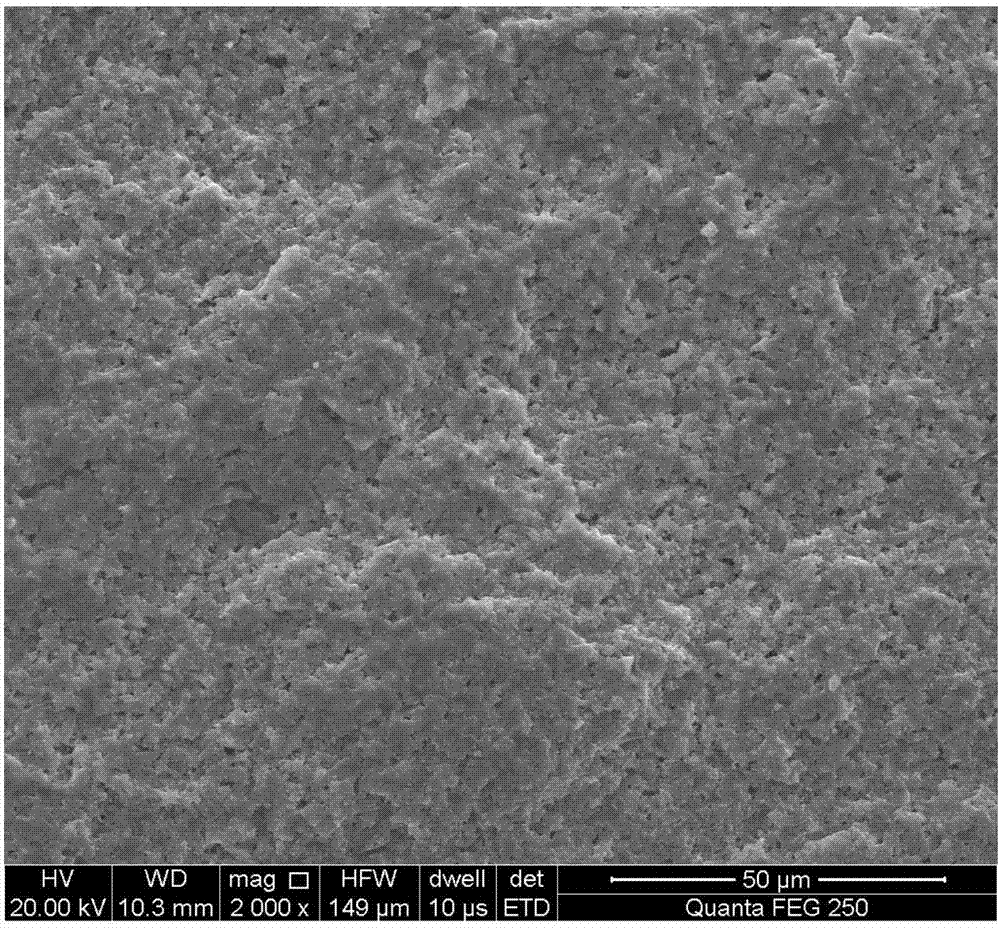Preparation method of silicon carbide-silicon nitride porous composite ceramic
A composite ceramic and silicon nitride technology, applied in ceramic products, applications, household appliances, etc., can solve the problem that the content of silicon carbide and porosity cannot be adjusted separately, and achieve the effect of uniform distribution and uniform pore size.
- Summary
- Abstract
- Description
- Claims
- Application Information
AI Technical Summary
Problems solved by technology
Method used
Image
Examples
Embodiment 1
[0043] 1) Heat treatment of silicon carbide precursor: heat polycarbosilane to 900°C in vacuum at a heating rate of 5°C / min, and keep it warm for 0.5 hours;
[0044] 2) Slurry preparation: 15 parts by weight of gel monomer, 1 part by weight of crosslinking agent, 3 parts by weight of dispersant, and 81 parts by weight of water are mixed to form a premix, and 10 parts by weight of yttrium oxide, 5 parts by weight of Parts by weight of aluminum oxide, 59.5 parts by weight of silicon nitride and 25.5 parts by weight of pre-sintered polycarbosilane powder form a slurry;
[0045] 3) Ball milling: ball milling the slurry for 6 hours;
[0046] 4) Gel injection molding: In nitrogen, add 0.9 parts by weight of monomer catalyst and initiator to the ball-milled slurry, stir evenly and pour it into the mold. After 30 minutes of reaction, the slurry is solidified into a green body, which is demoulded and taken out;
[0047] 5) Drying: Put the green body into the air with a temperature of ...
Embodiment 2
[0051] 1) Heat treatment of silicon carbide precursor: heat polycarbosilane to 900°C in vacuum at a heating rate of 5°C / min, and keep it warm for 0.5 hours;
[0052] 2) Slurry preparation: 15 parts by weight of monomer, 1 part by weight of crosslinking agent, 3 parts by weight of dispersant, and 81 parts by weight of water are mixed to form a premix, and 10 parts by weight of yttrium oxide, 5 parts by weight of Aluminum oxide, 68 parts by weight of silicon nitride and 17 parts by weight of pre-sintered polycarbosilane powder form a slurry;
[0053] 3) Ball milling: ball milling the slurry for 6 hours;
[0054] 4) Gel injection molding: In nitrogen, add 0.9 parts by weight of monomer catalyst and initiator to the ball-milled slurry, stir evenly and pour it into the mold. After 30 minutes of reaction, the slurry is solidified into a green body, which is demoulded and taken out;
[0055] 5) Drying: Put the green body into the air with a temperature of 40°C and a relative humidit...
Embodiment 3
[0058] 1) Heat treatment of silicon carbide precursor: heat polycarbosilane to 900°C in vacuum at a heating rate of 5°C / min, and keep it warm for 0.5 hours;
[0059] 2) Slurry preparation: 15 parts by weight of monomer, 1 part by weight of crosslinking agent, 3 parts by weight of dispersant, and 81 parts by weight of water are mixed to form a premix, and 10 parts by weight of yttrium oxide, 5 parts by weight of Aluminum oxide, 80.75 parts by weight of silicon nitride and 4.25 parts by weight of pre-sintered polycarbosilane powder form a slurry;
[0060] 3) Ball milling: ball milling the slurry for 6 hours;
[0061] 4) Gel injection molding: In nitrogen, add 0.9 parts by weight of monomer catalyst and initiator to the ball-milled slurry, stir evenly and pour it into the mold. After 30 minutes of reaction, the slurry is solidified into a green body, which is demoulded and taken out;
[0062] 5) Drying: Put the green body into the air with a temperature of 40°C and a relative hu...
PUM
 Login to View More
Login to View More Abstract
Description
Claims
Application Information
 Login to View More
Login to View More - R&D
- Intellectual Property
- Life Sciences
- Materials
- Tech Scout
- Unparalleled Data Quality
- Higher Quality Content
- 60% Fewer Hallucinations
Browse by: Latest US Patents, China's latest patents, Technical Efficacy Thesaurus, Application Domain, Technology Topic, Popular Technical Reports.
© 2025 PatSnap. All rights reserved.Legal|Privacy policy|Modern Slavery Act Transparency Statement|Sitemap|About US| Contact US: help@patsnap.com



